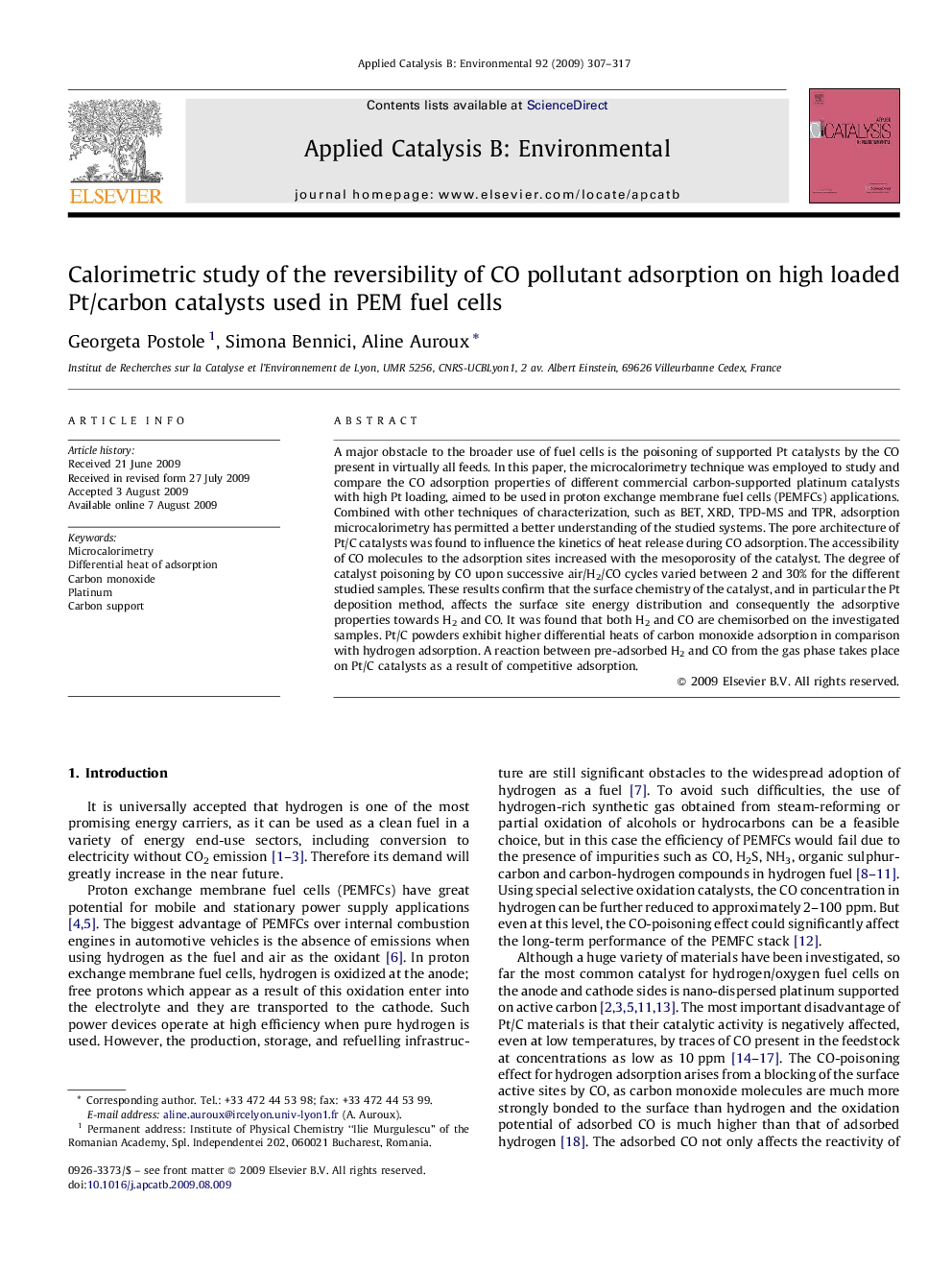| Article ID | Journal | Published Year | Pages | File Type |
|---|---|---|---|---|
| 47567 | Applied Catalysis B: Environmental | 2009 | 11 Pages |
A major obstacle to the broader use of fuel cells is the poisoning of supported Pt catalysts by the CO present in virtually all feeds. In this paper, the microcalorimetry technique was employed to study and compare the CO adsorption properties of different commercial carbon-supported platinum catalysts with high Pt loading, aimed to be used in proton exchange membrane fuel cells (PEMFCs) applications. Combined with other techniques of characterization, such as BET, XRD, TPD-MS and TPR, adsorption microcalorimetry has permitted a better understanding of the studied systems. The pore architecture of Pt/C catalysts was found to influence the kinetics of heat release during CO adsorption. The accessibility of CO molecules to the adsorption sites increased with the mesoporosity of the catalyst. The degree of catalyst poisoning by CO upon successive air/H2/CO cycles varied between 2 and 30% for the different studied samples. These results confirm that the surface chemistry of the catalyst, and in particular the Pt deposition method, affects the surface site energy distribution and consequently the adsorptive properties towards H2 and CO. It was found that both H2 and CO are chemisorbed on the investigated samples. Pt/C powders exhibit higher differential heats of carbon monoxide adsorption in comparison with hydrogen adsorption. A reaction between pre-adsorbed H2 and CO from the gas phase takes place on Pt/C catalysts as a result of competitive adsorption.
